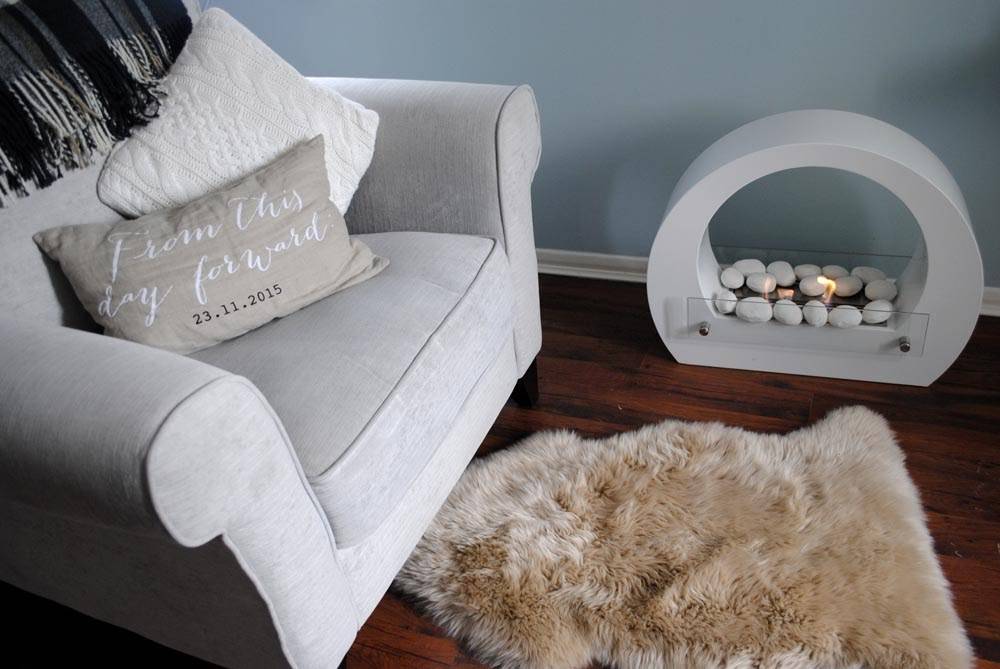
Why an open fire is still an option: Goodbye wood…Hello Biofires!

10% off on our Bioethanol Fireplaces. Subscribe Today!
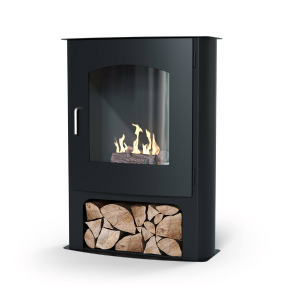
Sales of wet wood and house coal are set to be banned in 2021 after the UK’s Department for Environment, Food and Rural Affairs decided to move forward with legislation proposals laid out over a year ago.
The decision to go ahead with the ban has been attributed to the government’s plans to encourage the public to move towards cleaner forms of fuel that do not produce a substance known as particulate matter (PM). PM consists of small air pollution particles that can permeate the body’s vital organs and potentially cause a range of diseases and disorders.
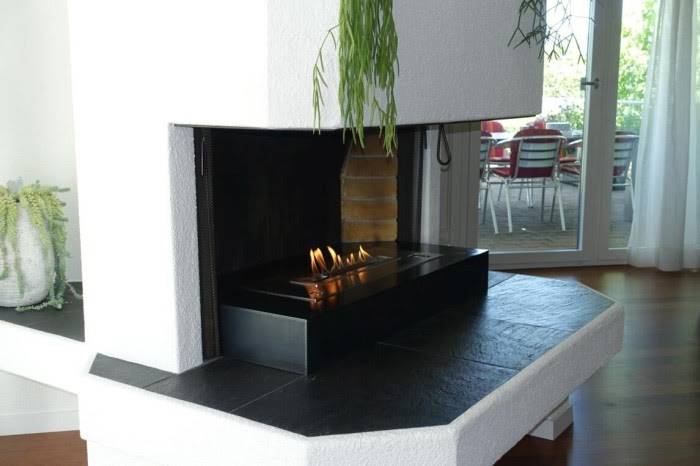
Naturally, this move will throw up a number of questions for homeowners who enjoy the comfort, warmth and aesthetic pleasure offered by real open fires. It is important to understand, however, that open fires themselves are not being banned. Rather, the use of certain fuels such as wet wood, which produces significant levels of PM, will be phased out. The legislative changes will mean that:
- Bags of traditional house coal will be phased out by the beginning of next year, whilst the direct sale of loose house coal will be banned by 2023
- Sales of wet wood in units of less than 2 metres cubed will be banned by the start of February 2021. Wet wood sold in greater volumes will have to come with advice on how it can be dried out before burning.
- Manufacturers of solid fuels will have to prove that their products contain a low level of sulphur and only emit small amounts of smoke.
Generally speaking, only older and cheaper models of wood-burning stoves and fireplaces will be affected by this ban, so we will not see a sudden shift away from particular appliances any time soon. However, it is fairly clear that traditional forms of fuel such as wood and coal are starting to decrease in popularity. Fortunately, though, if you’re a sucker for a deliciously cosy open fire that you can snuggle next to with your favourite book, we’ve got good news for you. You can still achieve that toasty fireplace you’ve always wanted whilst keeping your environmental impact low! Read on to find out more about biofires and the difference they could make to your home in the very near future.

First things first: what is an open fire?
Put simply, an open fire is the cosy open flame that sits pride of place in the centre of many people’s living rooms. Traditionally, fireplaces have been fuelled using wood. Nowadays, though, homeowners can opt for different types of fireplaces for open fires including:
1. Wood-burning fireplace
Wood-burnings fireplaces tend to suit those who like to hear their fires crackle in a homely way. They tend to be fairly effective heat sources and often come in an open hearth style.
The main downside to this kind of open log fires is that it requires a chimney and emits a considerable amount of smoke and chemicals into the atmosphere.
2. Open gas fireplace
Gas-burning fireplaces are relatively easy to install and do not require the use of a chimney. Whilst wood-burning fires may be preferred by traditionalists, open-fronted gas fires (gas open fires) can help to replicate that warm, cosy feeling you may be after without some of the harmful effects.
Indeed, gas fires do not produce smoke and produce less CO2 than wood-burning fires. It should be noted, however, that they still involve the burning of non-renewable fossil fuels.
3. Bioethanol fireplace
Bioethanol fireplaces are the perfect choice for consumers who want to replicate a cosy open fire aesthetic whilst keeping their carbon footprint to a minimum and protecting the health of their family. Although bioethanol fires do not tend to generate as much heat as their wood-burning counterparts, they come in a variety of styles, are very easy to install, and do not require a chimney. Some people may even decide to purchase a kit that allows them to convert their gas- or wood-burning fireplace into a bioethanol fireplace.
If you’re looking for the perfect bioethanol fireplace for your home, browse our range of gorgeous fireplaces, wood burner style fireplaces, free standing fireplaces and more, today!
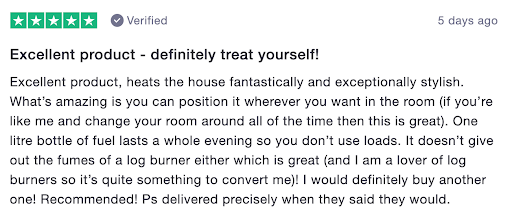
Are open fires bad for health? Can I have an open fire in my house?
It depends on the kind of fuel you are using to run them! As already explained, wood-burning fireplaces tend to carry the greatest health risks, particularly if the wood is wet.
Short-term effects of breathing in wood smoke arising from open log fire may include:
- Throat and eye irritation
- Lung inflammation
- Sinus problems
- Greater susceptibility to lower respiratory diseases
- A raised risk of stroke and heart attack
Long-term effects of breathing in wood smoke may include:
- Chronic lung conditions such as emphysema
- Structural changes in the lungs
- Various types of cancer
Although the risk to human health is generally low in young people, older people may start to experience seriously detrimental effects from wood-burning fires. Fortunately, alternatives such as bioethanol fireplaces, gas fireplaces and electric fireplaces are much safer and in most cases are just as stylish and enjoyable.
Will open fires or burning wood on open fires be banned?
This is a question that has caused a little confusion thanks to the recent announcement surrounding the wood-burning ban. The short answer is no. However, it should be noted that older and cheaper wood-burning varieties may be affected and are likely to be phased out over the coming months and years. Other types of open-fronted fireplaces will not be affected by upcoming legislation and are likely to go up in popularity over the coming years as a result.
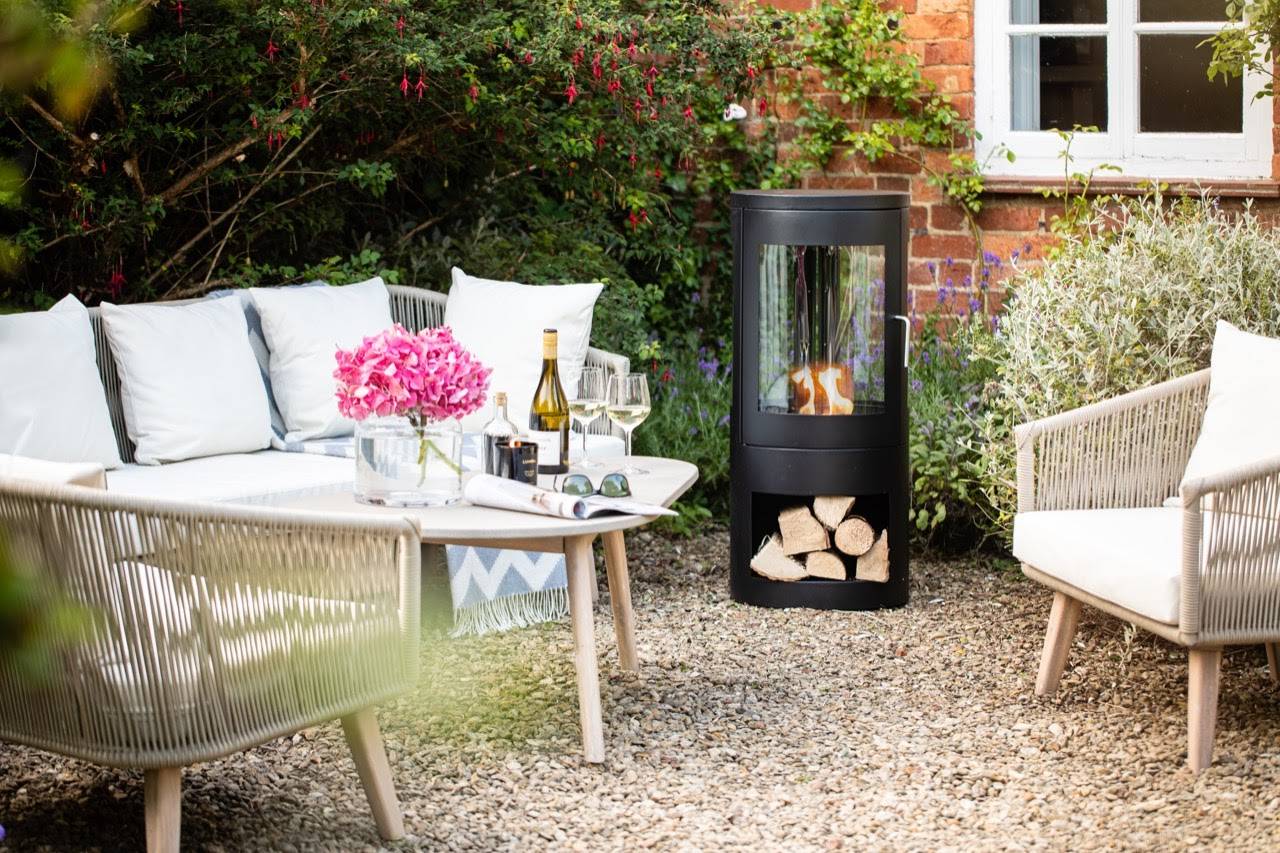
What’s better: open fire or stove?
The answer to this question generally depends on what you want out of a fireplace. If you’re looking for a cosy-looking model that burns brightly and you only need to use in short bursts, an open fireplace may suit you better. If you’re looking for a fireplace that is relatively efficient and burns steadily for a considerable period of time, you may want to opt for a stove.
How to make open fires more efficient
Open fireplaces are less efficient than stoves, so it is important to think about how you will minimise heat loss. If you’re using a wood-burning open fireplace, you will need to know how to use the damper properly. This is a plate inside the chimney designed to control airflow. Open it just enough to minimise how much hot air escapes through the chimney and close it completely after use (otherwise you will feel a draft!) If you’re using an open-fronted bioethanol fireplace, you can adjust the burner to determine the rate at which fuel is used up. Try to set it so you make the room warm enough without burning fuel too fast.
What is the best wood for open fires?
Generally speaking, the drier the wood, the better. In terms of heat and efficiency of an open fire, some of the best woods to burn include:
- Oak
- Ash
- Birch
- Cherry
- Beech
- Sycamore
Why you should opt for smokeless fuels for open fires
Smokeless fuels such as gas and bioethanol are becoming increasingly popular amongst homeowners, and for good reason. These are arguably the best fuel for open fires.
Smokeless fuels are known to generate around 80% less smoke than coal, as well 20% less CO2. They are also less likely to be affected by any bans in upcoming years and can help to keep you and your family safe from any potential health issues caused by smoke.
If you’re looking for the perfect bioethanol fireplace for your home, browse our range of gorgeous fireplaces today!





Leave A Reply
Your email address will not be published.